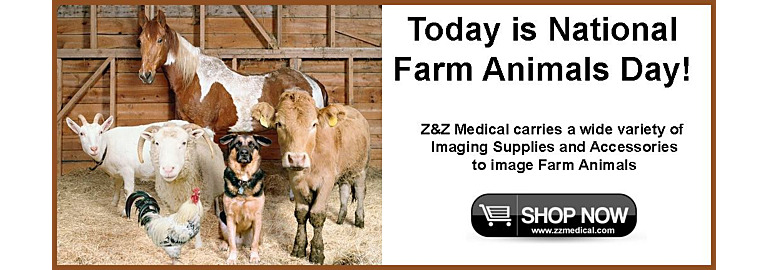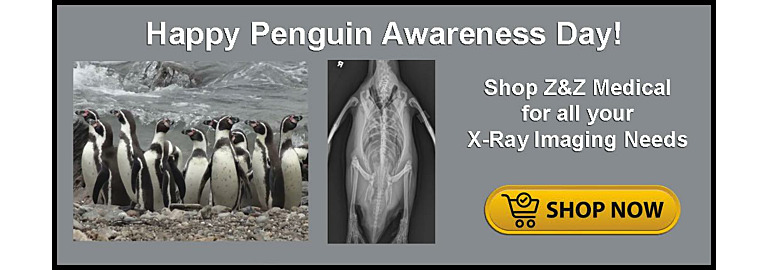In the world of adorable creatures, few capture our hearts quite like penguins. With their dapper tuxedo-like appearance and endearing waddle, these flightless birds have charmed their way into popular culture and our affections. Every year on January 20th, Penguin Awareness Day is celebrated worldwide to honor these fascinating and resilient creatures, while also raising awareness about their conservation and about them!
How many bones do penguins have?
I’m always fascinated with x-raying animals and when a veterinarian has to take X-rays of an injured bird that might have a broken bone, is sick or having difficulty moving, things can get pretty interesting. While penguins might look like simple, torpedo-shaped ice-waddlers, their bodies are actually quite complex. Even though they look nothing like people or animals you may encounter every day – like dogs and cats – they have similar skeletons and joints. They even have knees and elbows, but have about half as many bones. A human skeleton is made up of 206 bones. A penguin has just 112 in its whole body.
Bird bones in general are unique. They are lightweight and hollow, which allows the animal to take flight. Because birds need a lot of oxygen for an intense activity like flying, their bones are filled with spaces for air and they also have nine air sacs that surround their lungs. But wait, you might be thinking, “Penguins don’t fly at all.” That’s right, they evolved for a life on land and in the water, and they have a unique skeleton compared to many other birds.
The first penguins, which appeared shortly after the dinosaurs went extinct about 66 million years ago, were flightless. Ten million years later, they had become great swimmers. Present-day species spend up to 75% of their time in the ocean. That meant they had to grow heavier so they could dive underwater to hunt for food.
Penguins developed dense and heft bones that don’t have the air pockets that flying birds have. That helped make up for the air sacs around their lungs. Their bulky bones keep them from floating up to the water’s surface, like a scuba diver who straps on a weight belt to submerge. Penguins’ wings are also different because these birds need to swim, not soar into the sky. Penguins’ wings morphed into what look like short, flat, stiff fins that don’t bend like flying birds’ do. They also have fewer bones than other birds. Their wings act like paddles, helping them race through the water at high speeds. Gentoo penguins can swim up to 22 mph.That’s much faster than Olympic champion swimmer Michael Phelps, who broke a world record for humans at 5.5 mph.
The combination of hefty bones and powerful finlike wings allows penguins to descend quickly and dive incredibly deep to hunt for fish, krill and other food. An emperor penguin can go down to at least 1,500 feet, which is about the length of five football fields. Thanks to their fewer number of dense bones and other cool adaptations, penguins are champions of open water.
Penguins also need x-rays from time to time. So Z&Z Medical is prepared to offer a wide variety of imaging accessories for the top notch veterinarians that take care of our Penguin friends. Visit Z&Z Medical website today to order your veterinary accessories and supplies.





